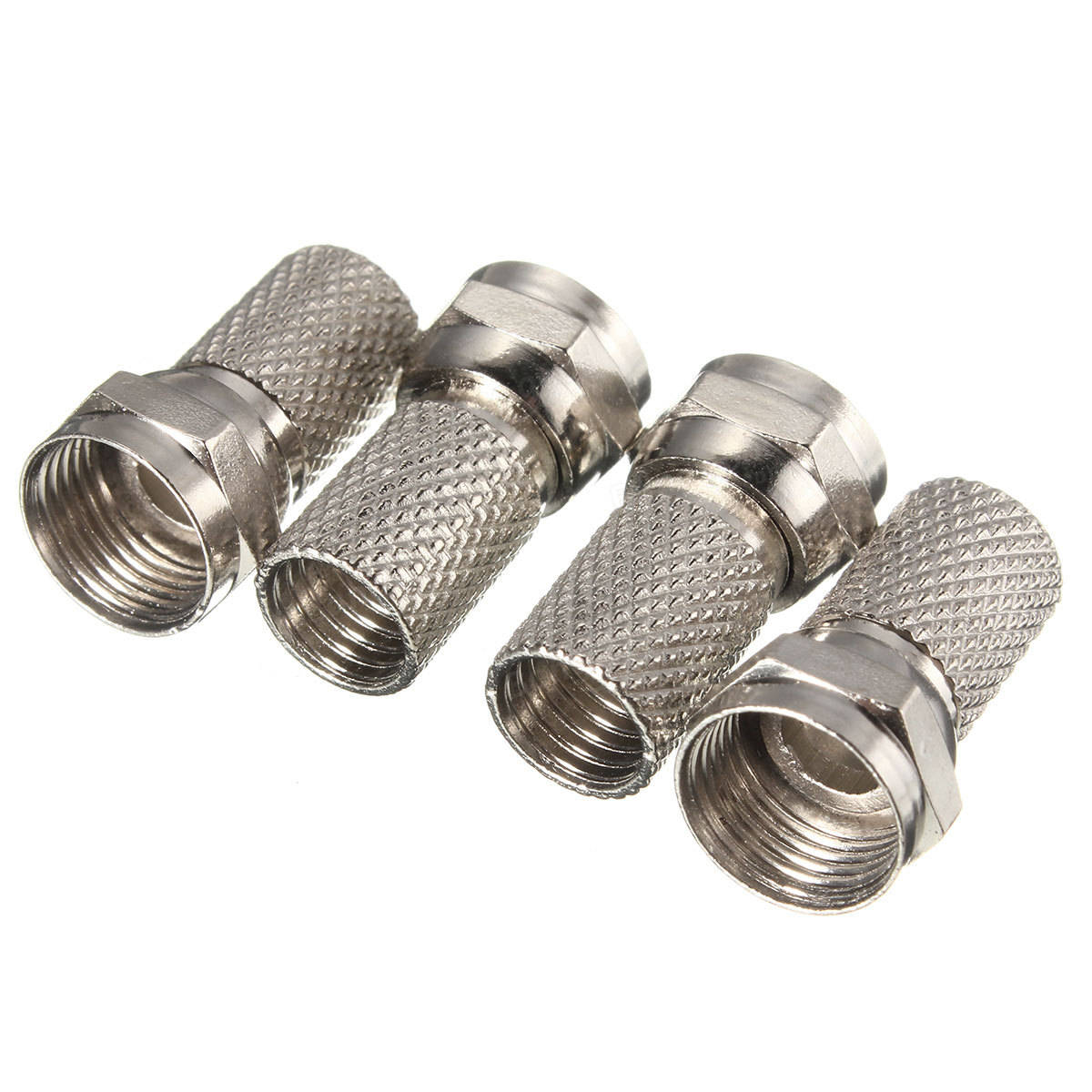
Many conventional coaxial cables use braided copper wire forming the shield. Some coaxial lines use air (or some other gas) and have spacers to keep the inner conductor from touching the shield. Solid Teflon (PTFE) is also used as an insulator, and exclusively in plenum-rated cables. A common choice is a solid polyethylene (PE) insulator, used in lower-loss cables. The properties of the dielectric insulator determine some of the electrical properties of the cable. The insulator surrounding the inner conductor may be solid plastic, a foam plastic, or air with spacers supporting the inner wire.
#Coaxial cable connector tv#
Copper-plated steel wire is often used as an inner conductor for cable used in the cable TV industry. To get better high-frequency performance, the inner conductor may be silver-plated. The inner conductor might be solid or stranded stranded is more flexible. Construction Ĭoaxial cable design choices affect physical size, frequency performance, attenuation, power handling capabilities, flexibility, strength, and cost. Other important properties of coaxial cable include attenuation as a function of frequency, voltage handling capability, and shield quality. The source and load impedances are chosen to match the impedance of the cable to ensure maximum power transfer and minimum standing wave ratio. In radio frequency systems, where the cable length is comparable to the wavelength of the signals transmitted, a uniform cable characteristic impedance is important to minimize loss. The characteristic impedance of the cable ( Z 0) is determined by the dielectric constant of the inner insulator and the radii of the inner and outer conductors. Larger diameter cables and cables with multiple shields have less leakage.Ĭommon applications of coaxial cable include video and CATV distribution, RF and microwave transmission, and computer and instrumentation data connections.

This property makes coaxial cable a good choice both for carrying weak signals that cannot tolerate interference from the environment, and for stronger electrical signals that must not be allowed to radiate or couple into adjacent structures or circuits. Further, electric and magnetic fields outside the cable are largely kept from interfering with signals inside the cable, if unequal currents are filtered out at the receiving end of the line. When using differential signaling, coaxial cable provides an advantage of equal push-pull currents on the inner conductor and inside of the outer conductor that restrict the signal's electric and magnetic fields to the dielectric, with little leakage outside the shield. Normally, the outside of the shield is kept at ground potential and a signal carrying voltage is applied to the center conductor. The cable is protected by an outer insulating jacket. Coaxial cable also provides protection of the signal from external electromagnetic interference.Ĭoaxial cable conducts electrical signal using an inner conductor (usually a solid copper, stranded copper or copper plated steel wire) surrounded by an insulating layer and all enclosed by a shield, typically one to four layers of woven metallic braid and metallic tape. This allows coaxial cable runs to be installed next to metal objects such as gutters without the power losses that occur in other types of transmission lines. One advantage of coaxial over other types of radio transmission line is that in an ideal coaxial cable the electromagnetic field carrying the signal exists only in the space between the inner and outer conductors. Its applications include feedlines connecting radio transmitters and receivers to their antennas, computer network (e.g., Ethernet) connections, digital audio ( S/PDIF), and distribution of cable television signals.

The term coaxial refers to the inner conductor and the outer shield sharing a geometric axis.Ĭoaxial cable is a type of transmission line, used to carry high-frequency electrical signals with low losses.

æ k s/) is a type of electrical cable consisting of an inner conductor surrounded by a concentric conducting shield, with the two separated by a dielectric ( insulating material) many coaxial cables also have a protective outer sheath or jacket.

Coaxial cable, or coax (pronounced / ˈ k oʊ.


 0 kommentar(er)
0 kommentar(er)
